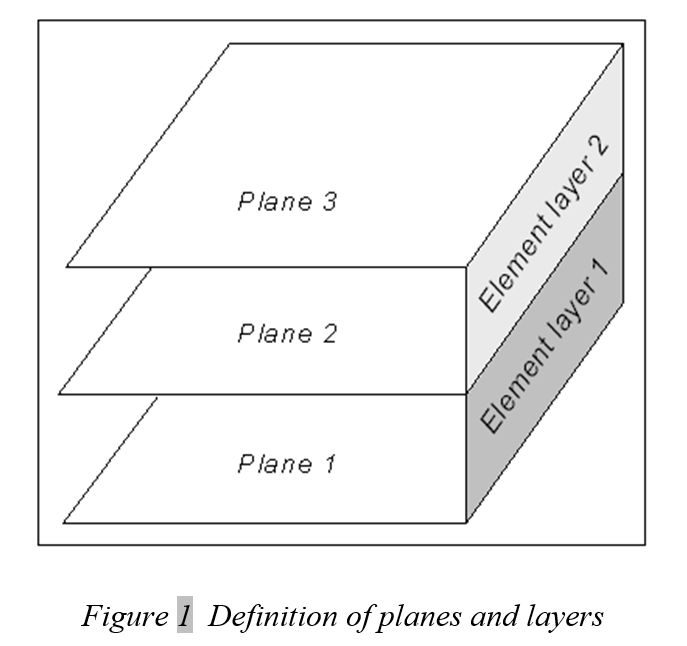GGU-3D-SSFLOW: Program concept
The program uses the finite element method. The real solution is a linear approximation for each element. Triangular prisms are used as finite elements. To simplify data input, the mesh is initially generated in plan. The projection of the triangular prisms onto the plan surface results in triangles, so you must first generate a triangular mesh. Depending on the complexity of the system, a number of height ordinates are associated with each node of this basic mesh, which describe the system in the third dimension. The height ordinates can possess different values at each node. The only condition is that every node has the same number of height ordinates. This allows complex systems to be generated.
Using this type of mesh generation, successive planes of nodes are located above each other, whereby plane can be somewhat misleading because the nodes of a node plane are not necessarily on one plane. Instead of the term node plane we will simply use plane.
The regions between these planes are called (element) layers. They are filled with triangular prisms.

You can assign a boundary condition to each node (source or potential). You can also assign different soil properties to each triangular prism.
If you have already worked with the GGU program GGU-2D-SSFLOW, you will hardly encounter problems with the GGU-3D-SSFLOW mesh generator. The additional effort involved consists of having to manage a battery of z ordinates for each node.
